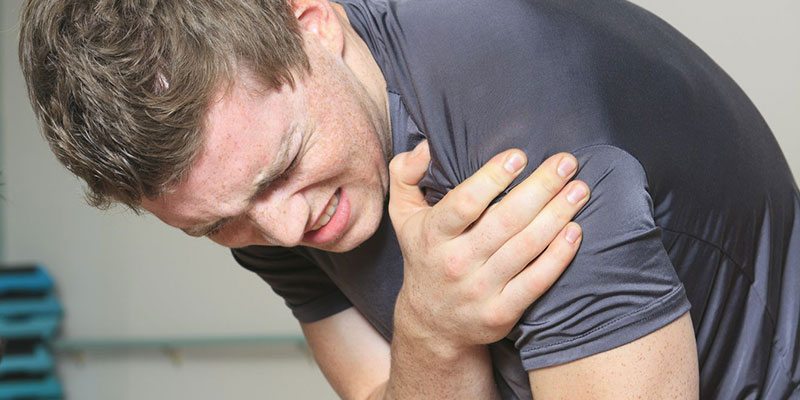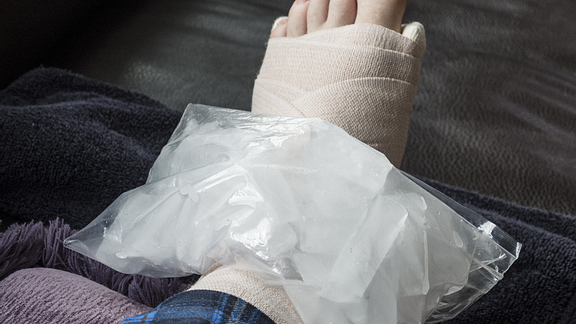Written by: Nathaniel Christoforou (Accredited Exercise Physiologist)
The traditional method of treating an injury has been to apply an ice pack immediately to reduce the swelling.
Is this treatment of muscular injury with ice the correct method?
For as long as I can remember, and in my years playing sport, the second
anyone injured themselves, it was a race for who could first find and
apply an ice pack.
Today, this seems to still be the case, I know any family member or friend of mine not directly across research into this topic would have the same approach, and it still seems to be the first method of treatment used when I’m watching the footy and a player strains a muscle.
Given the fact that I am aware of research in the last few years into this topic, this surprises me, especially in the AFL where players are surrounded by exercise professionals who would have surely come across some of this information as some point.

Maybe it is still being used for AFL athletes for some sort of psychological benefit? I.e. that it gives the athlete positive beliefs around the healing of their injury?
The reason for my confusion, is because in recent years, numerous studies have shown that the use of ice may not only promote the healing process but may actually impair it.
In 1987, Gabe Mirkin MD, coined the term RICE (rest, ice, compression, elevate). I am sure you have all heard this term used at some point, but this recent research has brought with it significant controversy and debate over the term.
When we are injured, the body undergoes an inflammatory response whereby certain inflammatory cells travel to the injured tissue to commence the healing process.
This results in the swelling that we experience. This is also identical to the way the same mechanisms fight off germs and bacteria in our body.
I assume the main reason most people apply ice to an injured area is to reduce swelling, right?
Another reason for applying ice might be to reduce pain. Now, while the latter still remains a somewhat valid reason (in that yes it does reduce pain), the first reason has been significantly contradicted.
Interestingly, research is showing that applying ice to reduce said swelling can actually delay healing by inhibiting the body’s ability to send such inflammatory cells to the site of injury.
Interestingly, Gabe Mirkin (the doctor who coined the term to begin with), said in 2014 that “there is no question that icing can reduce pain, at least temporarily, but it comes at a cost. “Anything that reduces your immune response will also delay muscle healing. “The message is that cytokines of inflammation are blocked by icing – that’s been shown in several studies.”

He says that instead of promoting the process of healing and recovery, icing may in fact impair it. “Coaches have been using my RICE guideline for decades, but now it appears that both ice and complete rest may delay healing, instead of helping.” Hopefully you are now beginning to understand some of my confusion in the opening of this article. In my opinion, Ice should be used only when it is required for absolute pain management, otherwise, I try to avoid it.
The above point on “both ice and complete rest” delaying the healing process is an interesting one. The same RICE term recommends rest (‘R’) following an injury, but Gabe Mirkin has again rebutted this following new research.
Rest and inactivity ‘shuts the muscle down,’ restricting blood flow and thus again inhibiting the inflammatory response, while tissue atrophy (wasting) ensues. It is now recommended that once fracture or significant injury is ruled out, gentle movement as opposed to rest, is best.
Gentle movement and restoration of range of motion with gradual introduction of functional activities are now encouraged.
To conclude, anything that inhibits the inflammatory response can also delay healing, and we should reconsider the immediate use of ice and rest unless absolutely necessary in the healing of an injury. Elevating an injured area also reduces blood flow to the area, so it is not a big stretch to assume the same for this. The same could be applied to non-steroidal anti-inflammatory drugs (such as ibuprofen).
Hopefully, you found this article interesting. This is an extremely debated topic and area of research, but I believe it is important to recognize new research and challenge traditional beliefs to advance in healthcare. If you have any questions, please contact us on 9857 3007 or use the comment section below on this Exercise Physiology Blog.
References:
https://k-active.com/wissen/wp-content/uploads/2019/10/RICE_The_End_of_an_Ice_Age.pdf
